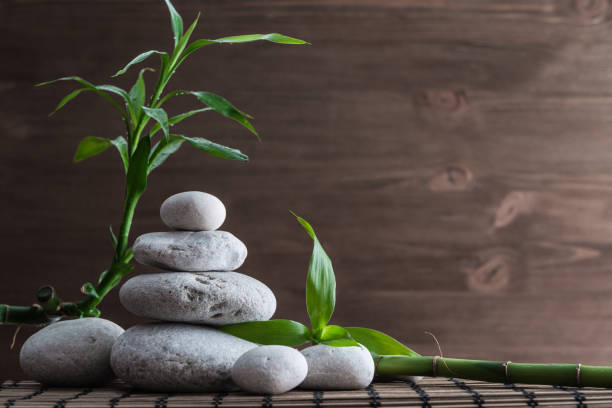Feng Shui Basics
Basic Feng Shui Colors and Elements: Essential Guide to Feng Shui Color Schemes and Elemental Balancing
Feng Shui, the ancient Chinese practice of harmonizing your environment, integrates the use of colors and elements to promote balance and positive energy in your living spaces. Understanding the basic principles of Feng Shui colors and elements can help you create a harmonious and supportive environment that enhances well-being and prosperity. This essential guide explores Feng Shui color schemes and elemental balancing, offering practical insights to help you apply these concepts effectively in your home or office.
1. The Five Elements of Feng Shui
Overview:
Feng Shui is based on the interaction of five key elements, each associated with specific colors, shapes, and qualities. Balancing these elements in your space is crucial for achieving harmony and positive energy flow.
The Five Elements:
- Wood: Represents growth, vitality, and creativity. Associated with the colors green and brown, wood symbolizes renewal and expansion. It is linked to the east and southeast areas of a space.
- Fire: Symbolizes passion, transformation, and energy. The colors red, orange, and purple are associated with fire. This element is connected to the south area of a space and can stimulate enthusiasm and dynamism.
- Earth: Represents stability, nourishment, and grounding. Earthy colors like beige, yellow, and terracotta are linked to this element. It governs the center of a space and promotes a sense of security and balance.
- Metal: Symbolizes clarity, precision, and efficiency. The colors white, gray, and metallic shades are associated with metal. It is linked to the west and northwest areas of a space and supports organization and focus.
- Water: Represents flow, abundance, and adaptability. Colors like blue and black are connected to water. This element governs the north area of a space and fosters communication and career growth.
2. Feng Shui Color Schemes
Overview:
Colors play a vital role in Feng Shui, influencing the mood and energy of a space. Each color is linked to one or more of the five elements and can enhance specific aspects of life.
Color and Elemental Associations:
- Red: Associated with fire, red is a powerful color that stimulates energy and passion. It can be used to enhance areas related to fame and reputation or to create a vibrant atmosphere.
- Green: Linked to wood, green promotes growth, healing, and renewal. It is ideal for spaces where you seek to boost creativity and vitality.
- Yellow: Connected to earth, yellow fosters optimism and stability. It is suitable for areas where you want to create a warm, nurturing environment.
- Blue: Associated with water, blue encourages calmness and tranquility. It is effective in spaces where you need to promote relaxation and emotional balance.
- White: Linked to metal, white symbolizes purity and clarity. It can be used to enhance areas related to productivity and focus.
- Black: Also associated with water, black represents depth and potential. It is useful for creating a sophisticated and reflective atmosphere.
3. Applying Feng Shui Colors and Elements
Overview:
To harness the benefits of Feng Shui colors and elements, apply them strategically in your living or working space. Consider the following tips to achieve balance and positive energy flow:
Key Tips:
- Identify the Bagua Map: The Bagua map is a Feng Shui tool used to analyze different areas of a space and their corresponding life aspects. Align colors and elements with the specific areas you wish to enhance, such as health, wealth, or relationships.
- Create Balanced Color Schemes: Use a balanced combination of colors to avoid overwhelming a space. For example, combine vibrant colors with neutral tones to create a harmonious and visually pleasing environment.
- Incorporate Elemental Accents: Integrate elements through décor items, such as wooden furniture, metal fixtures, or water features. Ensure that these elements complement the overall color scheme and contribute to a balanced atmosphere.
- Consider Room Functions: Tailor the use of colors and elements to the specific function of each room. For instance, calming colors and elements are ideal for bedrooms, while energizing colors may be more suitable for home offices or creative spaces.
- Adapt to Personal Preferences: While adhering to Feng Shui principles, consider your personal preferences and lifestyle. Choose colors and elements that resonate with you and support your overall well-being.
4. Common Feng Shui Color Mistakes to Avoid
Overview:
Avoiding common mistakes can help you achieve better results with your Feng Shui color schemes and elemental balancing.
Common Mistakes:
- Overusing Bold Colors: While bold colors can be energizing, excessive use can lead to imbalance and overstimulation. Use vibrant colors in moderation and balance them with calming tones.
- Ignoring Room Function: Applying colors and elements without considering the room’s function can lead to mismatched energy. Ensure that the colors and elements align with the intended use of each space.
- Neglecting Personal Preferences: Feng Shui is about creating a harmonious environment that supports your well-being. Don’t overlook your personal preferences and comfort in favor of strict adherence to Feng Shui rules.
5. Final Thoughts on Feng Shui Colors and Elements
Overview:
Feng Shui colors and elements offer a powerful way to enhance the energy and harmony of your living or working space. By understanding the basic principles and applying them thoughtfully, you can create an environment that supports your goals and well-being.
Key Takeaways:
- Balance is Key: Achieving balance among the five elements and incorporating a harmonious color scheme is essential for effective Feng Shui.
- Personalize Your Space: While adhering to Feng Shui principles, personalize your space to reflect your tastes and preferences.
- Continuously Adjust: Feng Shui is not a one-time practice but an ongoing process. Continuously assess and adjust your space to maintain harmony and positive energy flow.
By applying the principles of Feng Shui colors and elements, you can create a supportive and harmonious environment that enhances various aspects of your life. Embrace the art of Feng Shui to bring balance, prosperity, and well-being into your home or office.

